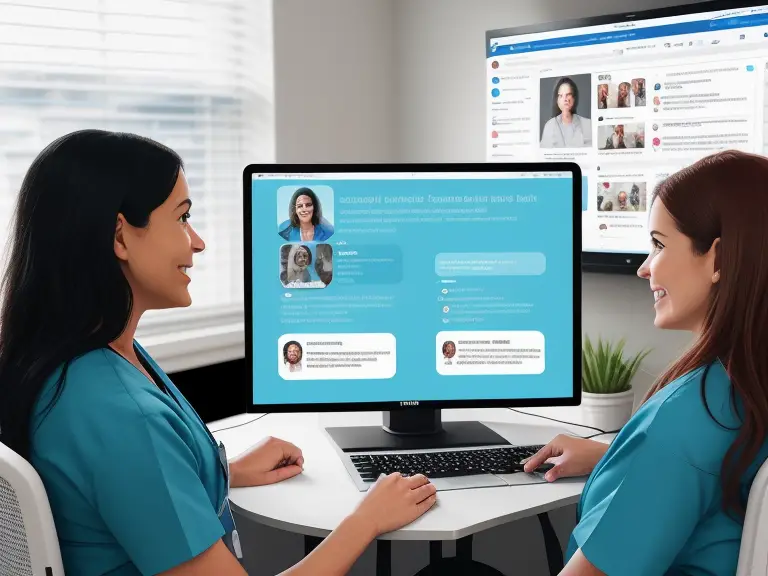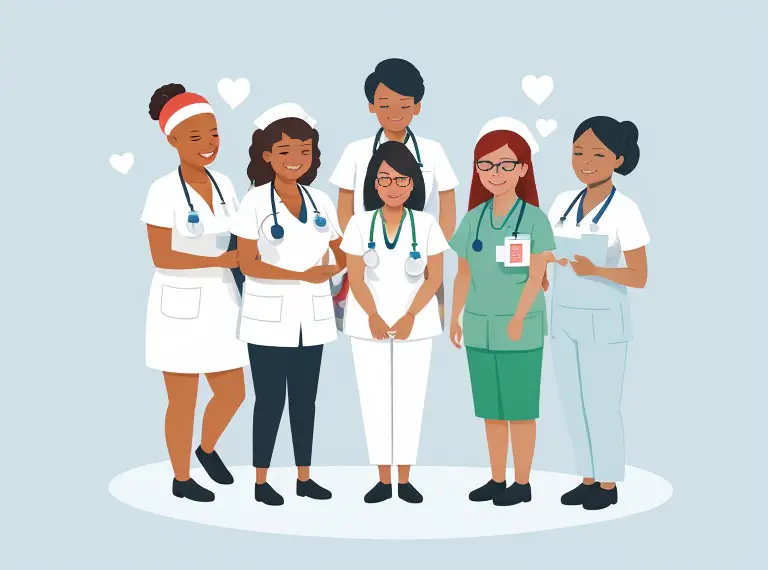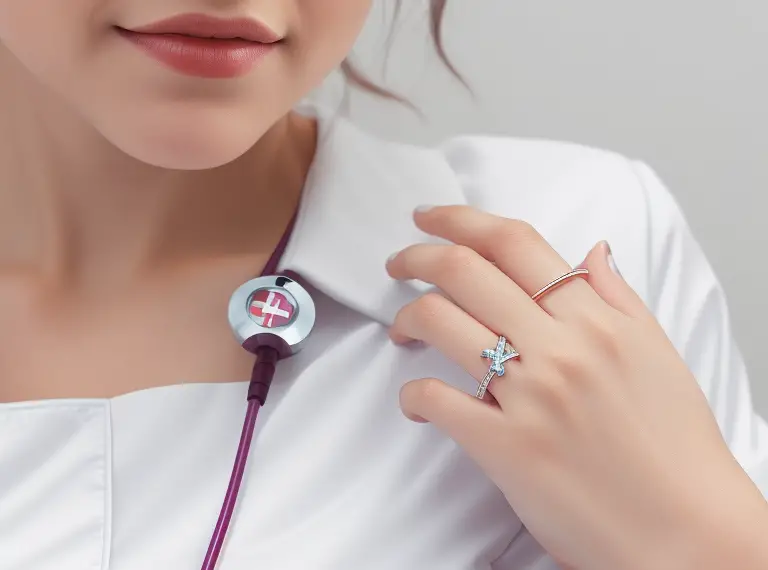Effective communication plays a vital role in nursing, fostering understanding, collaboration, and ultimately improving patient outcomes. However, various barriers can hinder communication within healthcare settings.
In this article, we will explore ten practical ways to overcome these communication barriers and enhance the delivery of care.
Importance of Effective Communication in Nursing
Effective communication lies at the heart of nursing practice. It forms the foundation for building relationships with patients, their families, and the interprofessional healthcare team.
When communication breaks down, patient safety, satisfaction, and overall quality of care are compromised. By understanding and addressing communication barriers, you, as a nurse, can ensure effective and meaningful interactions, leading to improved patient outcomes.
Common Communication Barriers in Nursing
Language and Cultural Differences
Language barriers pose significant challenges in nursing, especially in multicultural healthcare settings. Nurses must communicate with patients who have limited English proficiency or speak a different native language. Additionally, cultural differences can influence communication styles and expectations. These barriers can lead to misunderstandings, inadequate information exchange, and reduced patient satisfaction.
Technological Challenges
With the increasing use of technology in healthcare, nurses face communication barriers related to unfamiliarity with electronic health records (EHRs) and other digital systems. Technical difficulties, such as system crashes or slow response times, can impede timely communication and information sharing among healthcare providers.
Hierarchy and Power Dynamics
In healthcare settings, hierarchical structures and power dynamics can hinder effective communication. Nurses may feel hesitant to express their opinions or concerns to physicians or higher-ranking professionals, resulting in vital information being overlooked. Open communication channels and a culture of collaboration are necessary to overcome these barriers.
Emotional and Psychological Factors
Nursing can be emotionally demanding, and stress, fatigue, and burnout can affect communication skills. These factors may lead to misinterpretation of messages, increased conflicts, and decreased empathy. Addressing the emotional well-being of nurses is essential to maintain effective communication in healthcare environments.
10 Ways to Overcome Communication Barriers in Nursing
1. Active Listening
Active listening is a fundamental skill for effective communication in nursing. By actively engaging with patients, you can demonstrate empathy, gain valuable insights, and establish trust. Here are some techniques to enhance active listening:
- Maintain eye contact: Show your attentiveness and interest in what the patient is saying.
- Provide verbal and non-verbal cues: Nodding or smiling encourages patients to express themselves more openly.
- Practice reflective listening: Summarize and rephrase what the patient has said to ensure mutual understanding.
- Avoid interruptions: Allow patients to fully express their concerns and thoughts without interruption.
2. Clear and Concise Communication
Clear and concise communication is essential to ensure information is accurately conveyed and understood. When communicating with patients, consider the following strategies:
- Use simple language: Avoid complex medical jargon and explain information in a way that patients can easily comprehend.
- Avoid assumptions: Ensure that patients understand by asking open-ended questions and confirming their understanding.
- Confirm understanding through paraphrasing: Summarize the information shared by the patient to validate comprehension.
- Encourage questions and feedback: Create a safe environment for patients to ask questions and provide feedback, ensuring effective communication.
3. Open and Transparent Communication Channels
Creating open and transparent communication channels within healthcare settings is crucial for overcoming barriers. Here’s how you can achieve this:
- Foster a culture of open communication where all team members feel comfortable sharing their thoughts and concerns.
- Encourage feedback from colleagues and actively listen to their perspectives.
- Utilize regular team huddles or meetings to discuss communication challenges and find solutions collaboratively.
- Implement mechanisms such as suggestion boxes or anonymous feedback systems to provide an avenue for open communication.
- Share relevant information and updates with the healthcare team in a timely manner to ensure everyone is well-informed.
4. Empathy and Understanding
Empathy is the ability to understand and share the feelings of another person. In nursing, empathy promotes trust and patient-centered care. Enhance empathy and understanding by:
- Practice active empathy: Put yourself in the patient’s shoes and consider their emotions and experiences.
- Strive for cultural competence: Be mindful of cultural differences and tailor your communication to respect diverse backgrounds.
- Maintain a non-judgmental attitude: Create a supportive environment where patients feel comfortable expressing themselves without fear of judgment.
5. Non-Verbal Communication
Non-verbal cues, such as body language, facial expressions, and gestures, significantly influence communication in nursing. Utilize effective non-verbal communication to enhance your interactions with patients:
- Be aware of your body language and posture: Maintain an open and welcoming stance to convey approachability.
- Use facial expressions: Show empathy, concern, and reassurance through appropriate facial expressions.
- Utilize gestures and touch: Use gentle gestures and appropriate touch to convey comfort and support, when appropriate.
6. Use of Technology
In the modern healthcare landscape, technology plays a significant role in communication. While it offers numerous advantages, it can also present challenges. Embrace technology and leverage its potential for effective communication:
- Utilize electronic health records: Ensure accurate and timely documentation, promoting continuity of care.
- Explore telemedicine and video conferencing: Facilitate remote consultations and improve access to healthcare services.
- Leverage mobile communication devices: Use secure messaging platforms to communicate efficiently with colleagues and share important patient information.
7. Team Collaboration
Collaboration among healthcare professionals is crucial for providing holistic patient care. Effective team communication ensures that everyone involved is well-informed, contributing to seamless coordination. Foster effective collaboration through:
- Interprofessional communication: Maintain open lines of communication with colleagues from different disciplines.
- Participate in regular team meetings: Discuss patient care plans, exchange information, and address any communication challenges.
- Establish clear role expectations: Define each team member’s responsibilities and ensure everyone understands their role in patient care.
8. Patient Education
Patient education empowers individuals to actively participate in their care. As a nurse, you play a vital role in educating patients and breaking down complex medical information. Enhance patient education through:
- Use visual aids: Utilize diagrams, charts, and models to simplify complex concepts and enhance understanding.
- Provide written materials and handouts: Give patients written instructions and resources they can refer to after their interaction with you.
- Ensure patient comprehension: Use teach-back techniques to confirm that patients understand the information you have shared.
9. Language and Cultural Considerations
Language and cultural barriers can significantly impact communication in healthcare. Address these barriers by:
- Utilizing professional interpreters: When language barriers exist, engage the services of interpreters to facilitate effective communication.
- Understanding cultural norms and beliefs: Be culturally sensitive and adapt your communication style to accommodate diverse cultural backgrounds.
- Providing translated materials: Offer translated written materials and resources to assist patients who may have language limitations.
10. Feedback and Continuous Improvement
Feedback is essential for growth and development in nursing communication. Seek feedback from patients and colleagues to identify areas for improvement. Foster a culture of continuous improvement by:
- Seeking feedback from patients: Encourage patients to share their experiences and suggestions for better communication.
- Reflecting on your communication practices: Take time to evaluate your communication techniques and identify areas where you can improve.
- Participating in training and workshops: Attend professional development opportunities to enhance your communication skills and stay up-to-date with best practices.
Benefits of Overcoming Communication Barriers
By overcoming communication barriers, nursing professionals can experience numerous benefits:
- Improved Patient Outcomes: Effective communication leads to better patient understanding of their condition and treatment plans, reducing the risk of medical errors and improving overall healthcare outcomes.
- Enhanced Collaboration and Teamwork: Clear communication fosters collaboration among healthcare professionals, facilitating coordinated care and shared decision-making, ultimately benefiting patient outcomes.
- Increased Patient Satisfaction: When patients feel heard and understood, their satisfaction with the healthcare experience increases, leading to greater patient engagement and adherence to treatment plans.
- Reduced Errors and Misunderstandings: Overcoming communication barriers minimizes the likelihood of misinterpretations, misunderstandings, and errors that can compromise patient safety.
Training and Education for Effective Communication
To equip nurses with effective communication skills, various training and educational opportunities can be provided:
- Communication Skills Workshops: Organizing workshops that focus on active listening, conflict resolution, and effective communication techniques can enhance nurses’ interpersonal skills.
- Cultural Competency Training: Offering training programs that promote cultural awareness, sensitivity, and understanding helps nurses navigate diverse patient populations and communicate effectively across cultures.
- Technology Integration Training: Providing comprehensive training on using digital systems, EHRs, and other communication tools ensures nurses can leverage technology for efficient and secure communication.
Conclusion
In conclusion, effective communication in nursing is vital for providing safe, quality care. By implementing these ten strategies we mentioned above, you can overcome communication barriers, establish meaningful connections, and optimize patient outcomes. Remember, communication is a skill that can always be honed, and fostering open, empathetic, and clear interactions is key to delivering exceptional nursing care.
FAQs
Q: How can you overcome communication barriers with patients who have limited English proficiency?
A: To overcome language barriers, you can utilize professional interpreters, use visual aids and gestures, and provide translated written materials. It’s important to create a supportive environment and allow extra time for communication with patients who have limited English proficiency.
Q: What are some effective strategies for communicating with patients from diverse cultural backgrounds?
A: When communicating with patients from diverse cultural backgrounds, it is important to be culturally sensitive, respect cultural norms and beliefs, and use culturally appropriate communication styles. Take the time to learn about different cultures, ask open-ended questions, and actively listen to foster effective communication.
Q: How can you promote effective communication during challenging situations, such as delivering difficult news to patients or their families?
A: When delivering difficult news, you can promote effective communication by demonstrating empathy, providing a calm and supportive environment, and using clear and compassionate language. Allow patients and their families to express their emotions, actively listen to their concerns, and offer appropriate support and resources.
Q: What can you do to improve communication within interdisciplinary healthcare teams?
A: To improve communication within interdisciplinary teams, actively participate in regular team meetings, clarify roles and responsibilities, and maintain open and respectful communication channels. Share information, seek input from team members, and foster a collaborative environment to enhance teamwork and patient outcomes.
Q: How can you ensure effective communication during patient handoffs or transitions of care?
A: To ensure effective communication during patient handoffs, use standardized protocols, document important information accurately, and engage in face-to-face or electronic communication with the receiving healthcare team. Provide a comprehensive and concise summary of the patient’s condition, treatment plan, and any ongoing concerns.
Q: How can you incorporate feedback from patients into your communication practices?
A: Actively seek feedback from patients by encouraging them to share their experiences, concerns, and suggestions. Provide patient satisfaction surveys or feedback forms to facilitate the collection of valuable input. By listening to patient feedback and implementing necessary improvements, you can continuously enhance your communication skills.














